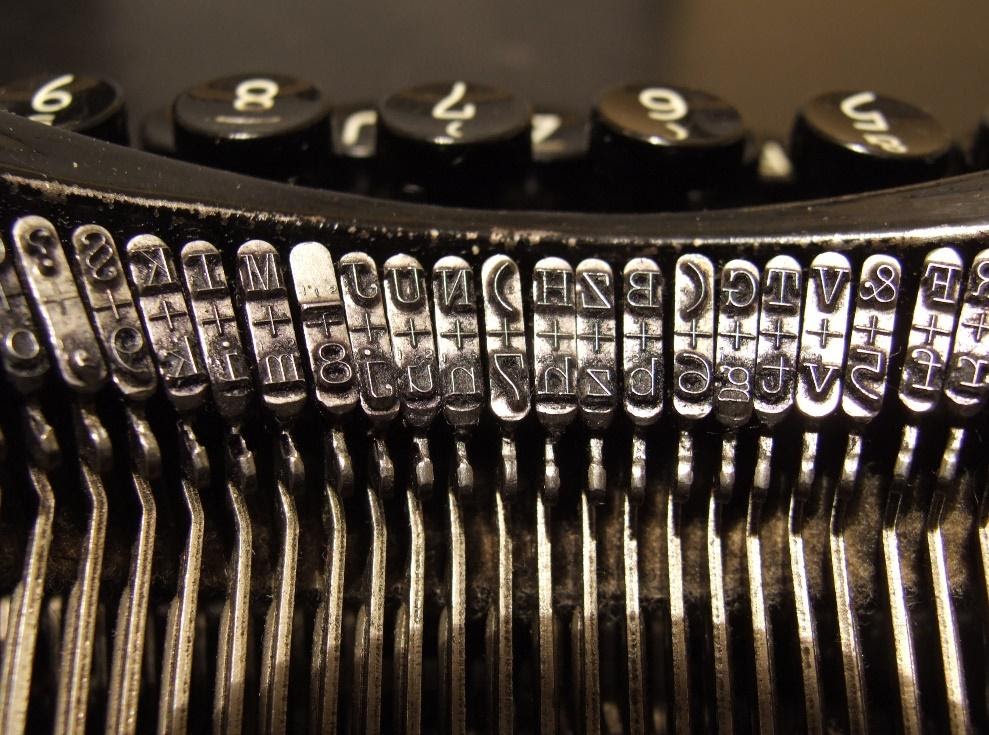
But you won't find the Enter key on the keyboard of a mechanical typewriter: instead of it, there was an (unsigned) lever on the left side of the carriage.
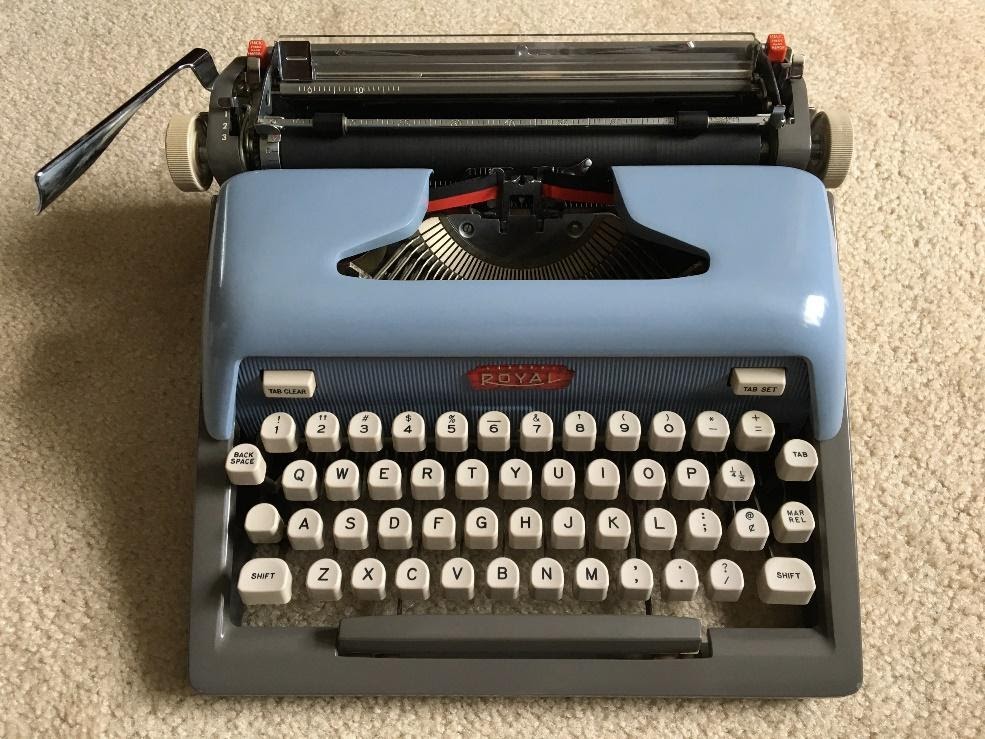
(Another striking difference between its keyboard and a computer keyboard is a more logical arrangement of the Backspace and Tab keys: the key to move along the line to the left - from the left edge of the keyboard, to move to the right - from the right edge.)
It is clear that the mechanical key that moves the massive carriage the full width of the sheet, it would be difficult to press with one finger. Electric typewriters were free of this limitation; indeed, the Blickensderfer Electric (1901) first introduced the carriage return and line feed key. Without further ado, this key is signed "Left". There is also a "Right" key under it, which slowly moves the carriage towards the end of the line. The History of the Typewriter (1909) comments: “The practical effect is that everything from“ Dear Sir ”to“ Yours truly, ”is written without lifting your hands from the keyboard. Even if there were no other innovations in this typewriter, except for the two keys "Left" and "Right", it would already be competitive in the current market. "
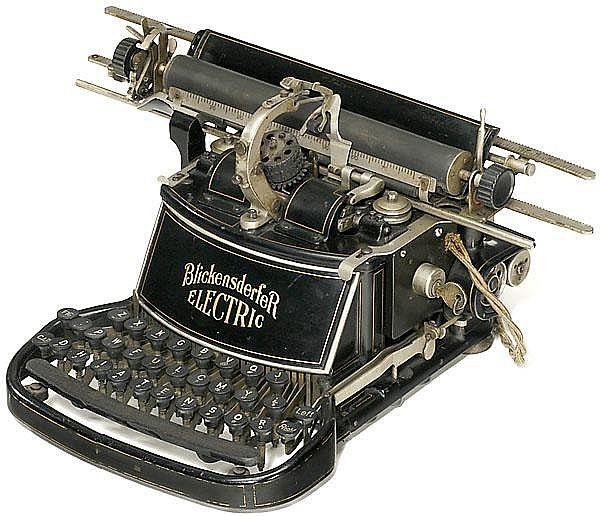
Alas, the expectations of 1909 did not come true: power supply in the daytime for another two decades remained a luxury inaccessible to most offices, so a carriage return with a lever remained the only option. It is estimated that a total of about 1,500 Blinks were produced, and only four have survived to this century.
A year earlier, in 1908, the Morkrum Printing Telegraph was developed - later it was sold under the Teletype brand, and this brand became a household name for teleprinters. The teletype coupled the earlier idea of a “typing telegraph,” which automatically decoded a telegraph code and printed text on paper tape, with the user interface of an electric typewriter: for the operator, the only difference was that the paper was not in close proximity to the keyboard, but behind hundreds of miles. The “CAR RET” key appeared on the teletype keyboard for the first time, and next to it “LINE FEED”: most likely, they were separated to simplify the design of the receiver, so that each received code corresponds to one simple mechanical action.From the teletype code 1908, the separation of CR and LF was inherited by the "International Telegraph Code" (1924), and then EBCDIC and ASCII; and even a hundred years later, when the last teletypes went to museums, this division continued to complicate the job of programmers.
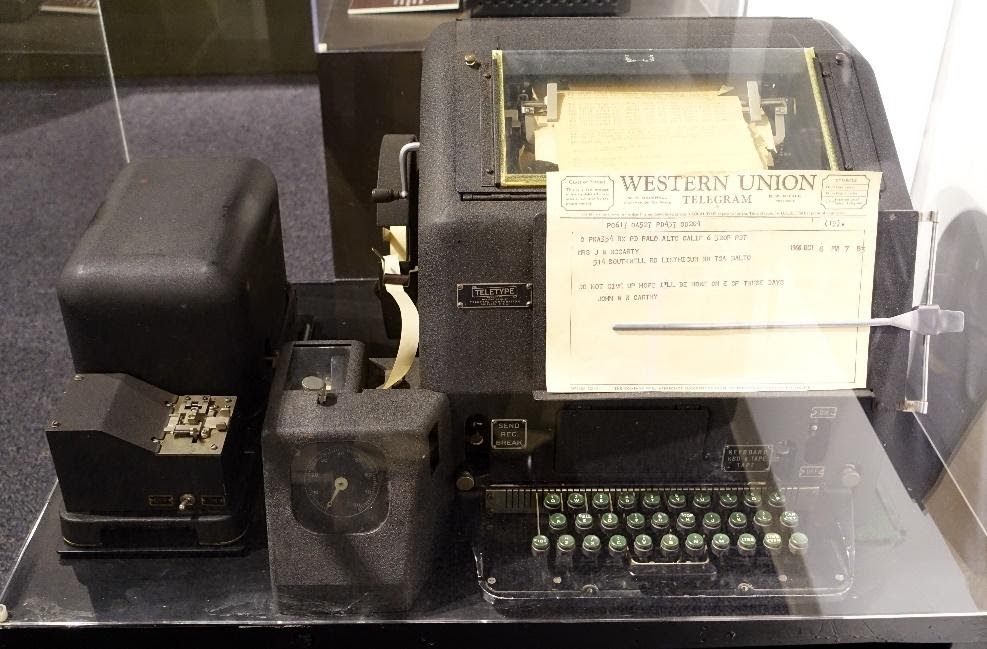
But back to the beginning of the last century, the electrification of carriage return in typewriters resumed in 1929, when Northeast Electric developed the Electromatic. In it, following the example of a teletype, the "Carriage Return" key appears: it is still of the same shape as all the other keys - but the only one, signed in a circle. In 1933, IBM bought the Electromatic machine division and began producing them under the IBM Electromatic brand, and from 1935 - IBM Electric.

Starting with the second model, "IBM Electric Model A" (1949), the key became square, and the inscription on it was reduced to the more familiar to us "Return".
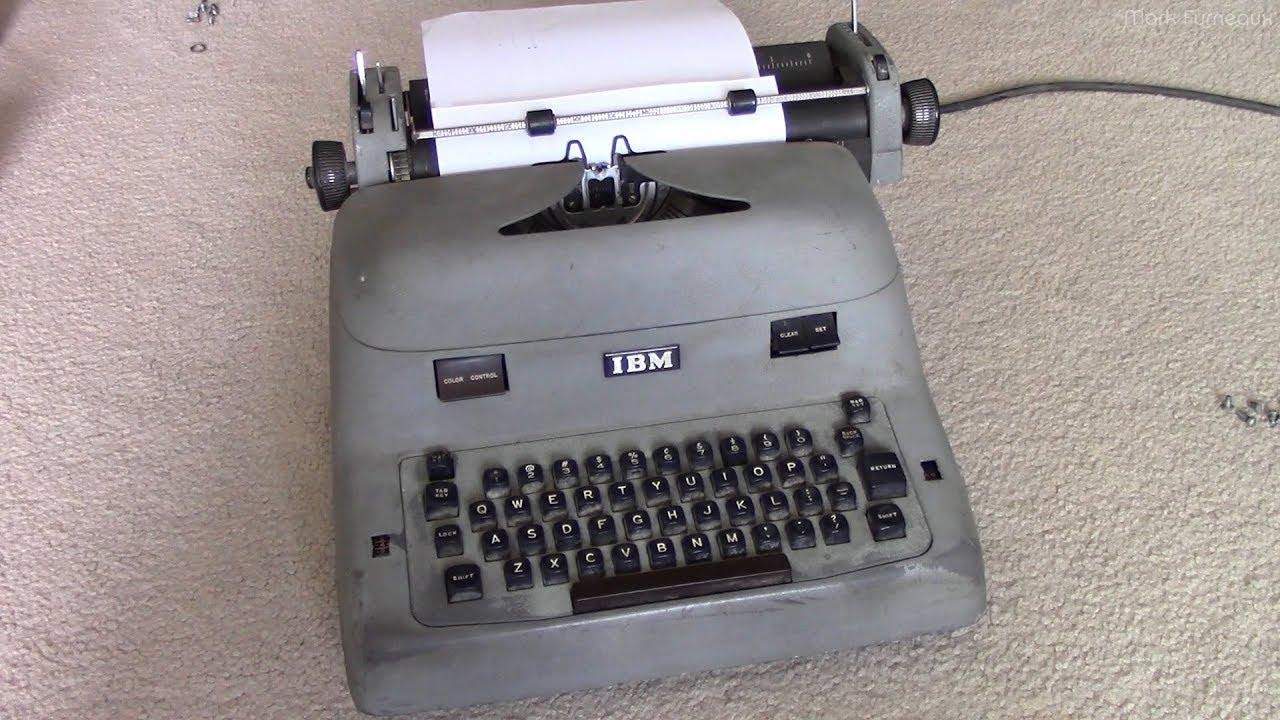
In "IBM Selectric" (1961), the Return key begins to take on the familiar shape - vertical, occupying two rows. Innovations in the typewriters of this series - the absence of a movable carriage and a removable medium in the form of a ball, allowing the use of alternately different fonts - ensured Selectric a tremendous success: by 1972 among American typewriters, 36% were from this series, by 1982 - 90%. In 1975, the US Federal Trade Commission, commenting on Litton's complaint about IBM's emerging monopoly in the typewriter market, described Selectric as "the most important invention in the industry in its history." Unsurprisingly, the layout, designed by Eliot Noyce specifically for Selectric, influenced all further development of keyboards: look also at the shapes of the Tab, Caps Lock and Shift keys.
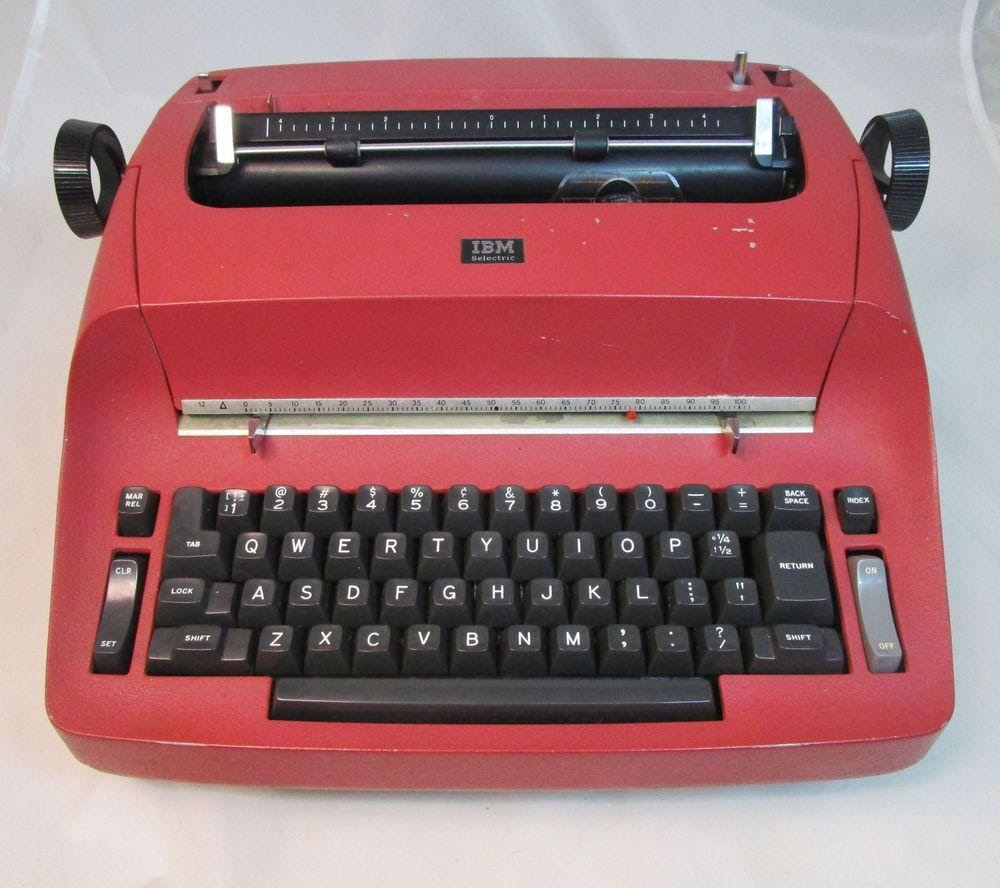
You may notice that there is a sloppy half-key gap between the ½ and ¼ keys and Return. In the next typewriter of the series, "IBM Selectric II" (1971), a new "Express Backspace" key was placed there - as a result, Return took the now traditional shape of "U upside down".
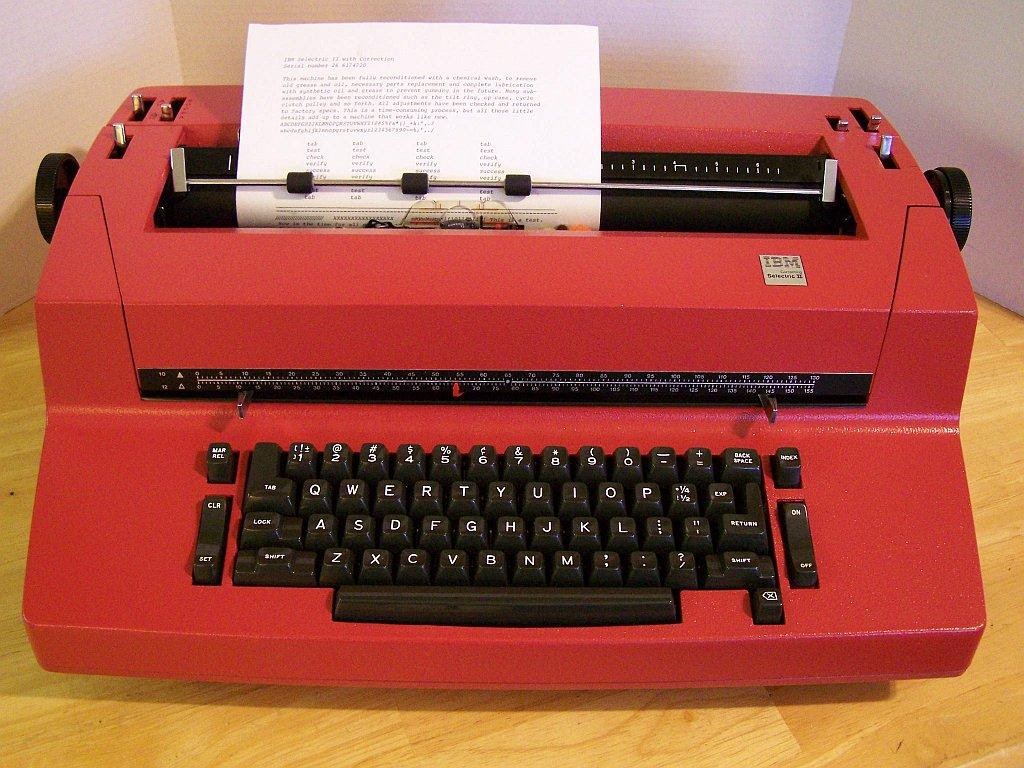
On the keys of typewriters produced for the international market, IBM replaced the English signatures with graphic symbols: Tab was indicated by an arrow to the right, Backspace - by an arrow to the left, Caps Lock - by an arrow down. In export models, the first Selectric on Return had the same left arrow as on Backspace; but September 13, 1971 can be considered the birthday of Return in its usual form: in "Selectric II" it was first given not only the traditional form, but also the now traditional graphic designation "↵".
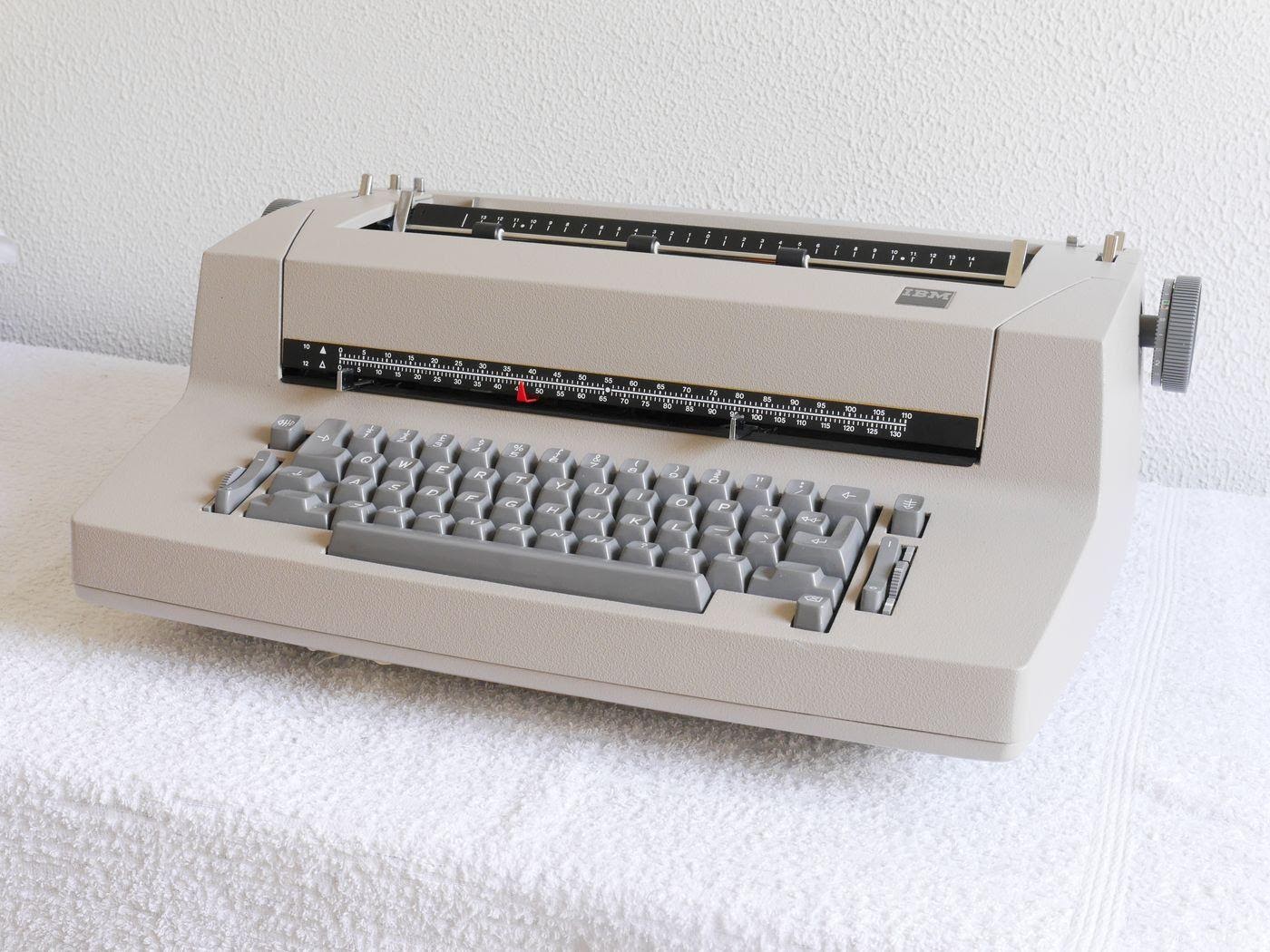
In the meantime, typewriters began to give way in popularity to electronic word processing systems. The same teletypes were originally used to enter text into a computer; but specialized terminals began to appear. In the famous VT100 video terminal (1978), DEC brought together two branches of keyboard development: the shapes of the Caps Lock, Shift and Return keys are borrowed from Selectric II, but to the right of the right Shift we see the legacy of teletypes - a separate Line Feed key. (On some VT100s, the Break key was also labeled "Here is"; why such a key on teletypes is understandable, but why is it when working with a computer?) VT100 among terminals has become the same as Selectric was among typewriters; even the terminal emulator built into Windows 98 has VT100 compatibility mode!
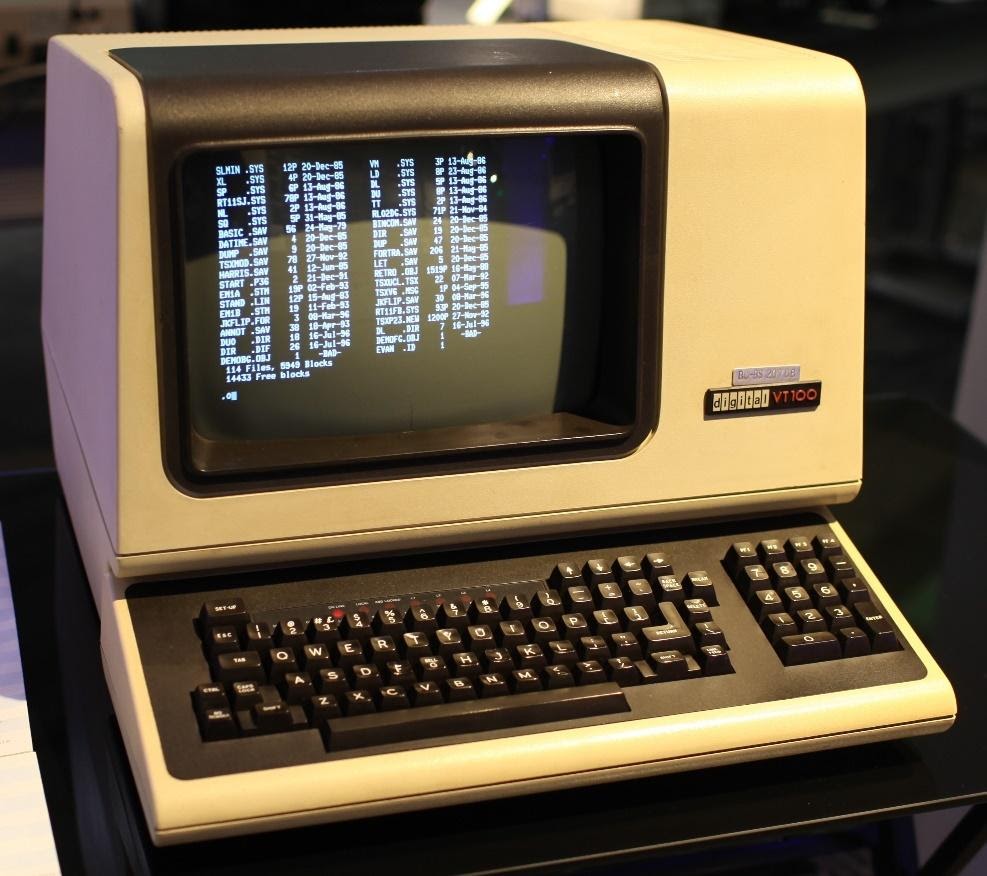
In addition to video terminals, another new type of device appeared in the 1970s - personal computers. The first PC can be considered the "Datapoint 2200" (May 25, 1970) from Computer Terminal Corporation. Its primacy manifested itself in one more area: the key in the form ↵ first received its current name "Enter" instead of "Return"; so the release date of Datapoint 2200 can be considered Enter's birthday.
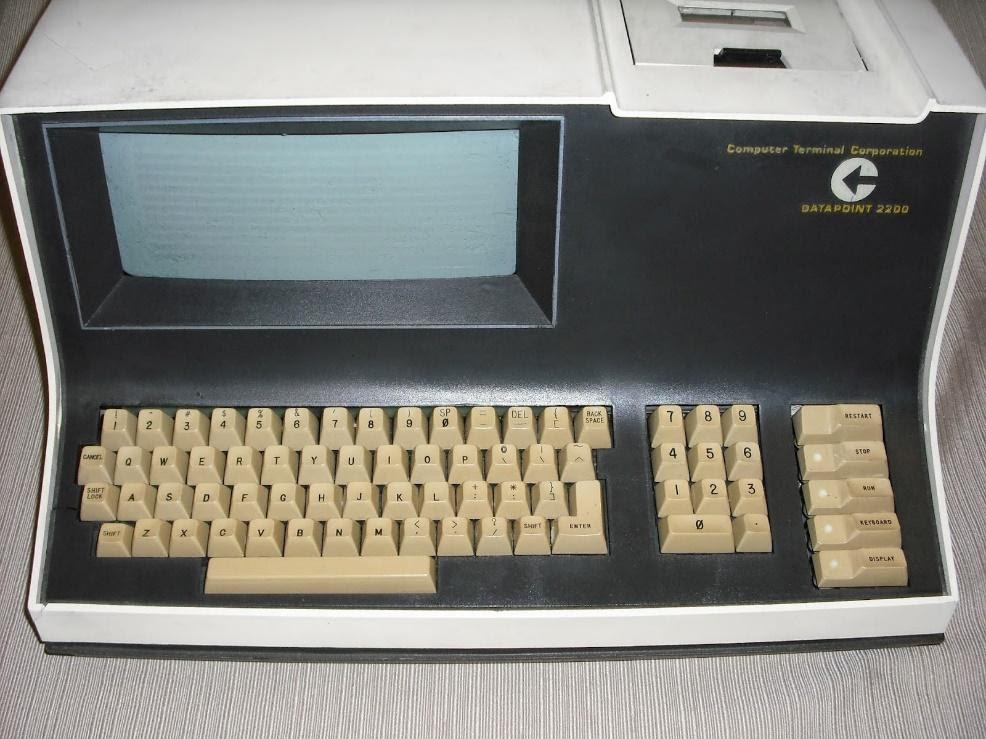
The most successful early PC makers - Apple, Commodore, Tandy Radio Shack - were targeting an audience of "tech enthusiasts"; but IBM, inspired by the success of the early adopters, conceived the personal computer for office workers accustomed to the Selectric keyboard. Nevertheless, the keyboard of the first IBM PC (1981) bears little resemblance to the Selectric: the keys squeezed into a tight rectangle have lost their characteristic shapes; Enter and Shift didn't even fit the signature! Maybe some technological problems prevented IBM in 1981 from releasing a keyboard a couple of inches wider, where the keys would not have to be pressed like that? Such a keyboard did come out with the IBM AT in 1984: Enter is upside down again, and Ctrl, Alt and Caps Lock took the form used in Selectric and VT100 for Caps Lock and Shift.

In 1984, the story ends: the key, which was forty years old "Carriage Return" and the next forty years - simply "Return", received its final name, shape and badge.
